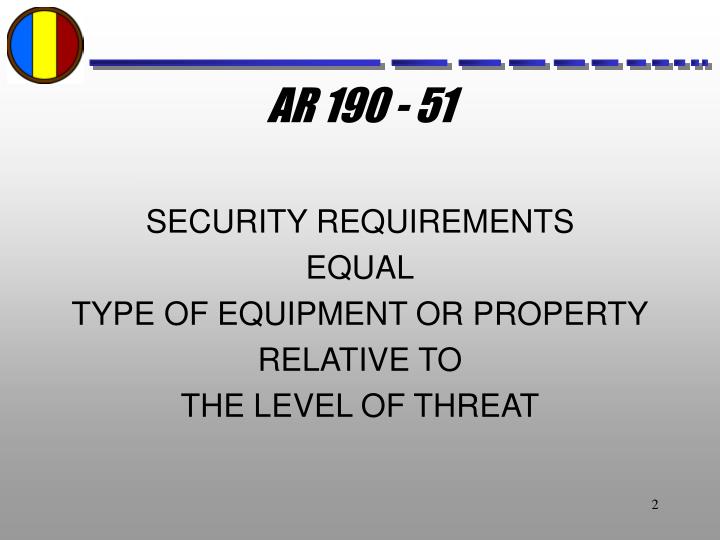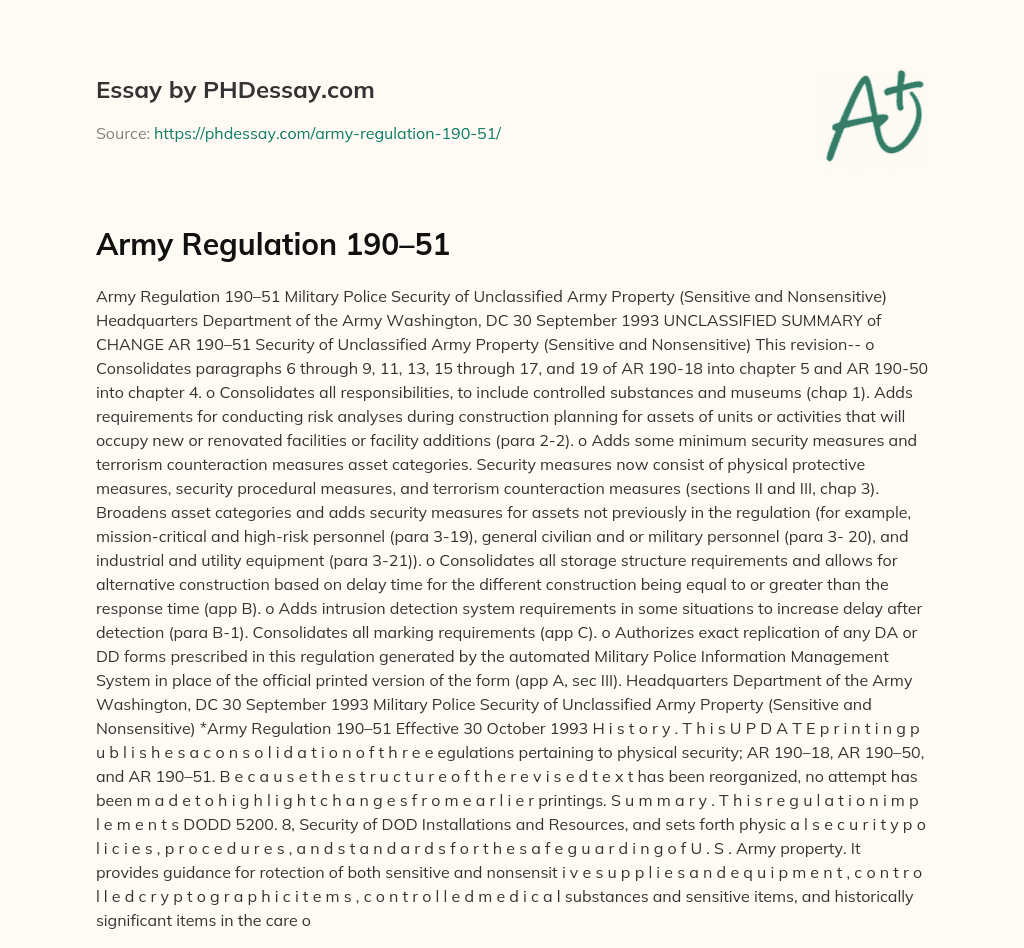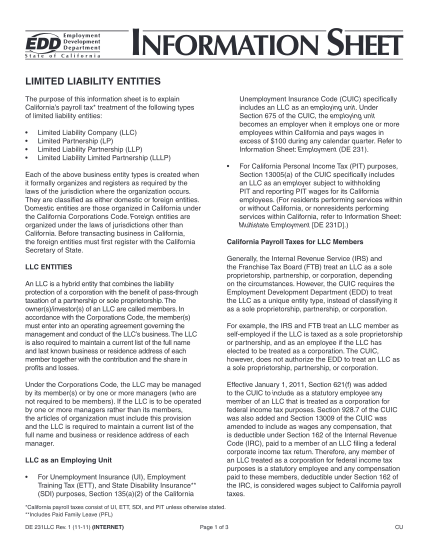Army Regulation 190-51 : What it is
Army Regulation 190-51: What it is
The Army Regulation 190-51, titled "Army Military Police Law Enforcement," is a crucial document that sets the guidelines and procedures for military law enforcement within the United States Army. This regulation covers a wide range of topics, including the responsibilities of military police officers, the enforcement of laws and regulations, and the protection of Army installations and personnel. Let's dig deeper into the key aspects of this regulation and understand its significance.
 Understanding the Importance of AR 190-51
Understanding the Importance of AR 190-51
The Army Regulation 190-51 is designed to provide comprehensive guidance on the application of military law enforcement responsibilities within the Army. This regulation plays a vital role in maintaining discipline, order, and security in military installations, as well as ensuring the safety of Army personnel and their families.
 Key Elements of AR 190-51
Key Elements of AR 190-51
AR 190-51 consists of several important elements that contribute to the effective functioning of the Army's military police units. Understanding these elements is crucial for both military police officers and the general public to ensure a secure environment and the enforcement of Army regulations. Let's explore some of these key elements:
1. Roles and Responsibilities
AR 190-51 outlines the specific roles and responsibilities of military police officers within the Army. This includes maintaining law and order, enforcing regulations, conducting investigations, and supporting the Army's overall mission. By clearly defining these roles, the regulation helps military police officers understand their duties and expectations.
2. Physical Security Measures
The regulation also covers the implementation of physical security measures within Army installations. This includes securing access points, surveillance systems, and safeguarding classified information. By establishing stringent security practices, AR 190-51 ensures the protection of valuable assets and minimizes the risk of unauthorized access.
3. Law Enforcement Operations
AR 190-51 provides guidance on conducting law enforcement operations within the Army. It covers various aspects, such as traffic enforcement, investigations, and criminal apprehension. This ensures that military police officers have clear instructions on how to handle different situations, maintain public safety, and uphold military law and order.
Frequently Asked Questions (FAQs)
Q: Who does AR 190-51 apply to?
A: AR 190-51 applies to all military police officers, Army personnel, and individuals residing or working within Army installations.
Q: How often is AR 190-51 updated?
A: AR 190-51 is periodically reviewed and updated as necessary to address emerging security concerns, changes in laws, and advancements in law enforcement practices.
Q: Can civilians file complaints under AR 190-51?
A: Yes, civilians residing or working within Army installations can file complaints under AR 190-51 if they believe their rights have been violated or if they observe criminal activities.
Conclusion
The Army Regulation 190-51 is a critical document that serves as the foundation for military law enforcement within the United States Army. It defines the roles and responsibilities of military police officers, outlines physical security measures, and provides guidance on law enforcement operations. By adhering to the guidelines set forth in AR 190-51, the Army ensures the safety and security of its personnel and promotes a disciplined environment. It's essential for military police officers and Army personnel to familiarize themselves with this regulation to maintain law and order effectively.
Sources:
Army Regulation 190-5 - Army Military
 Image Source : armymilitary.net
Image Source : armymilitary.net MCoE Regulation 190-11 2014-2021 - Fill And Sign Printable Template
 Image Source : www.uslegalforms.com
Image Source : www.uslegalforms.com mcoe regulation form 2021 pdf worksheet service school sign signnow preview
Military Police: The Army Physical Security Program (Army Regulation
security physical police military army program flip amazon front back
Army Regulation 190–51 - PHDessay.com
 Image Source : phdessay.com
Image Source : phdessay.com The Army: K9 Unit In The Army
 Image Source : thearmypenkoku.blogspot.com
Image Source : thearmypenkoku.blogspot.com k9 service sergeant furry malinois handler
13 Army Dd Forms - Free To Edit, Download & Print | CocoDoc
 Image Source : cocodoc.com
Image Source : cocodoc.com Army Regulation 190-51 - Army Military
 Image Source : armymilitary.net
Image Source : armymilitary.net Army Regulation 190-51 - Army Military
 Image Source : armymilitary.net
Image Source : armymilitary.net Military police: the army physical security program (army regulation. Army regulation 190-51. 13 army dd forms. Army regulation 190–51. Army regulation 190-5